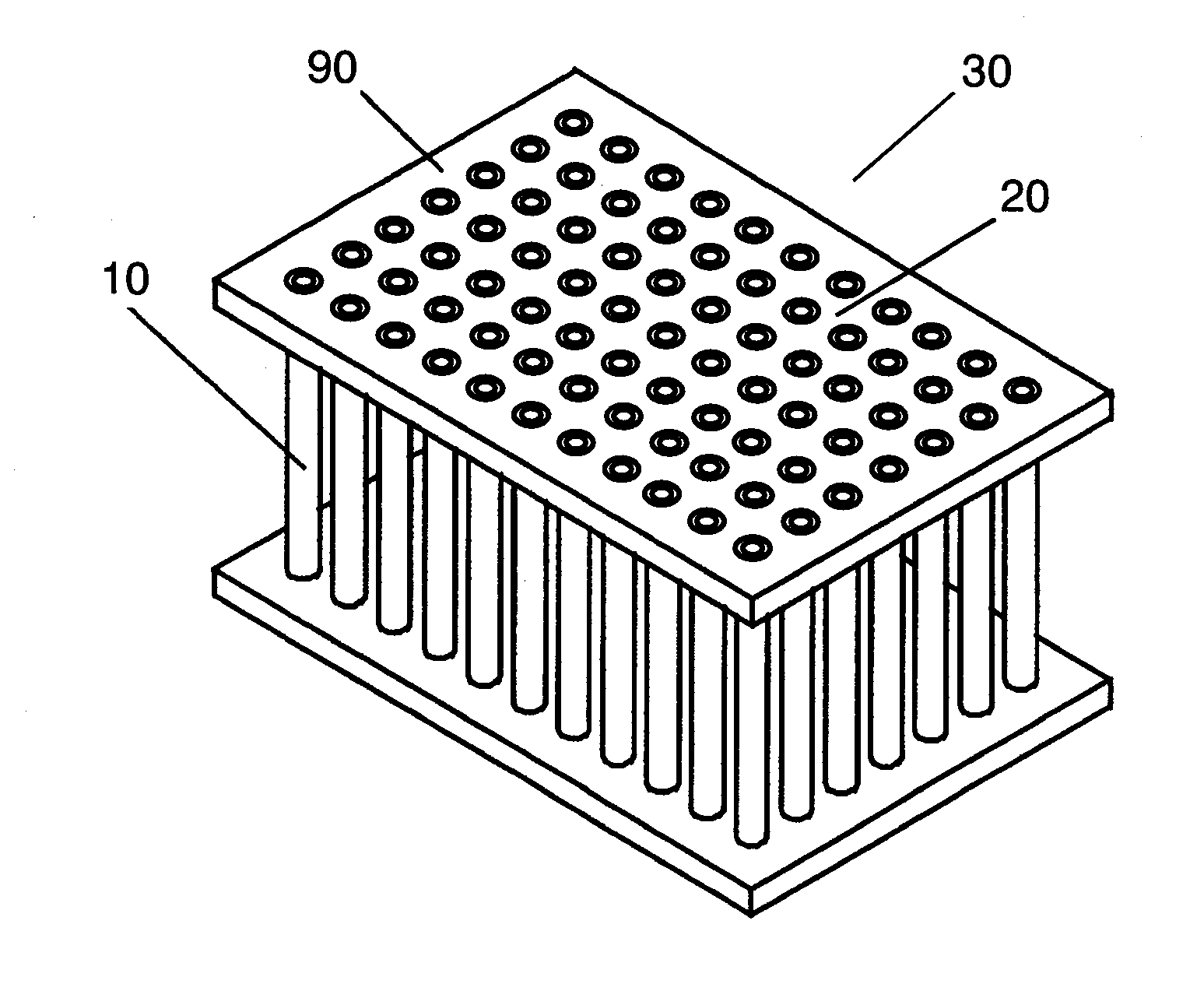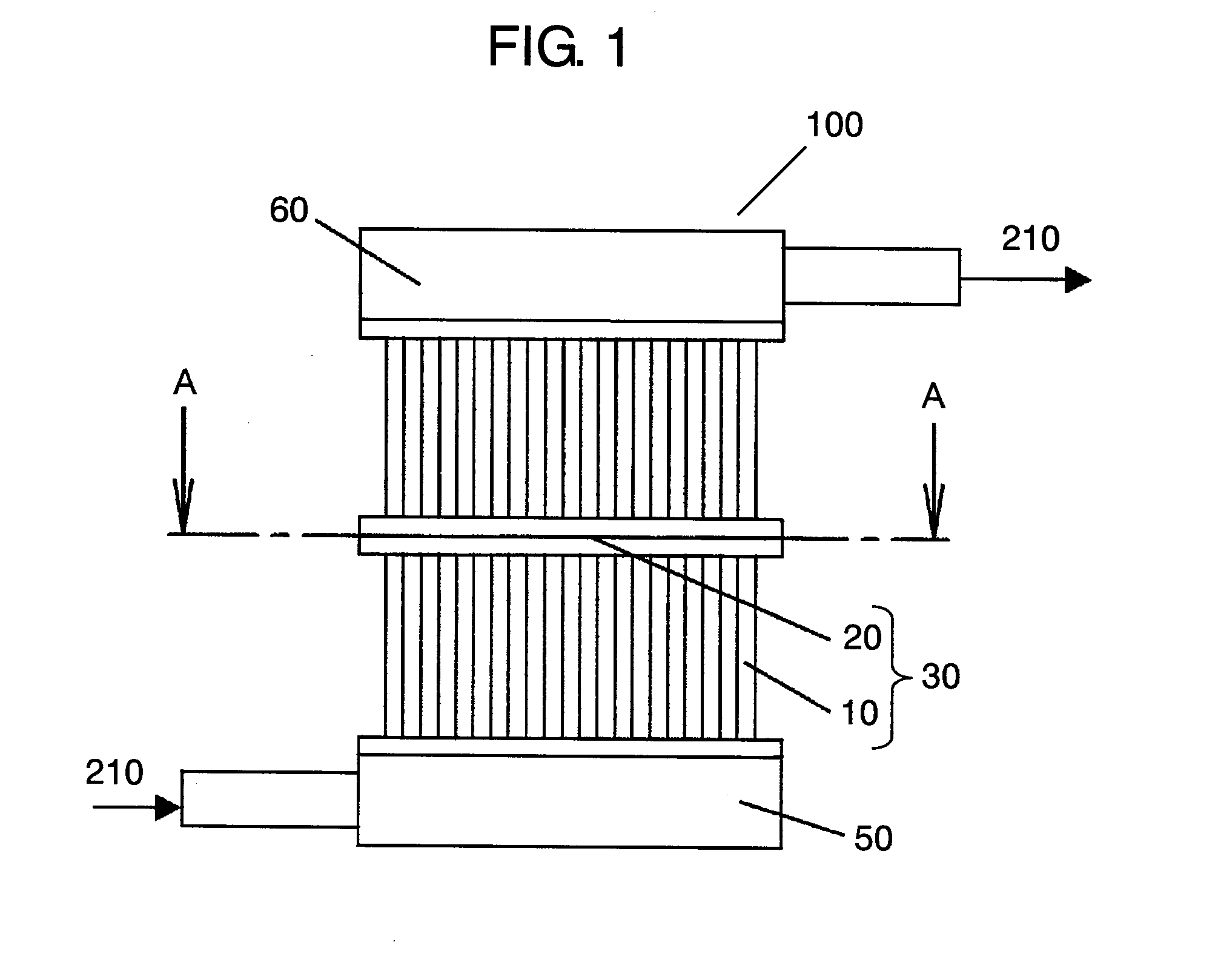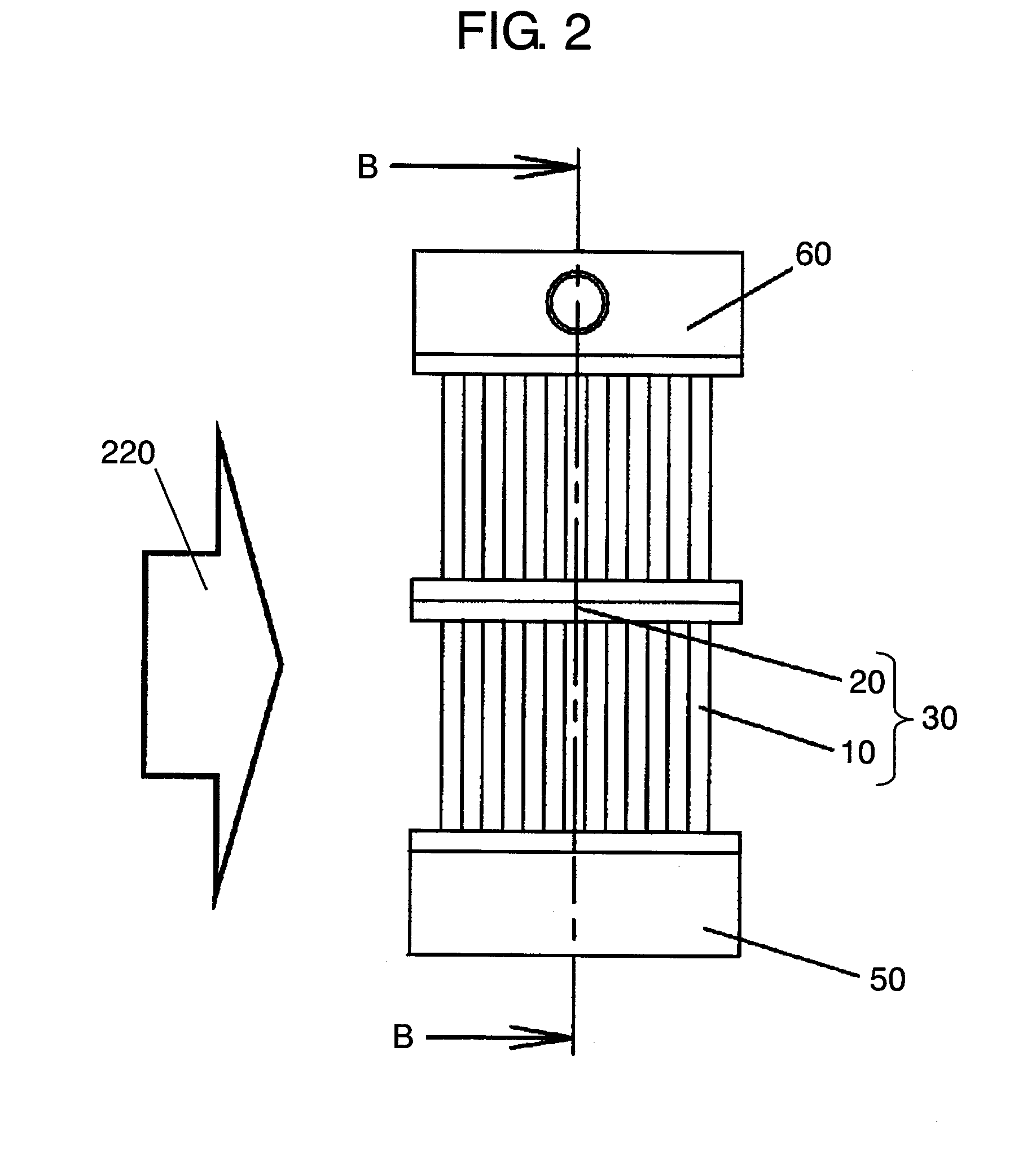Heat Exchanger and Method of Producing the Same
a technology of heat exchanger and heat exchanger, which is applied in the direction of metal-working equipment, stationary conduit equipment, lighting and heating equipment, etc., can solve the problem that the structure can limit the non-fluid area of the inner fluid
- Summary
- Abstract
- Description
- Claims
- Application Information
AI Technical Summary
Benefits of technology
Problems solved by technology
Method used
Image
Examples
exemplary embodiment 1
[0078]FIG. 1 shows a front view of a heat exchanger in accordance with the first embodiment of the present invention. FIG. 2 shows a lateral view of the heat exchanger, and FIG. 3 shows a sectional view cut along line A-A in FIG. 1, and FIG. 4 shows a sectional view cut along line B-B in FIG. 2.
[0079]As shown in FIG. 1-FIG. 4, heat exchanger 100 in accordance with the first embodiment includes tube-group blocks 30 formed of tubes 10 and substrates 20. Two tube-group blocks 30 are layered by connecting tubes 10 along the tube axis at peripheries 90 of substrates 20. Inlet header 50 and outlet header 60 are placed on the lower end and the upper end of layered blocks 30.
[0080]Each one of tubes 10 forms a cylindrical tube and includes one flow path through which inner fluid runs. Tube 10 is not necessarily a cylindrical one, e.g. it can be a tube of which cross section shapes like a rectangle, polygon or ellipse. Peripheries 90 of substrates 20 are connected to each other directly witho...
exemplary embodiment 2
[0093]FIG. 8 shows a front view of a heat exchanger in accordance with the second embodiment of the present invention. FIG. 9 shows a lateral view of the heat exchanger, FIG. 10 shows a sectional view cut along line C-C in FIG. 8, and FIG. 11 shows a sectional view cut along line D-D in FIG. 9.
[0094]In FIG. 8-FIG. 11, heat exchanger 200 includes tube-group blocks 130 formed of tubes 110 and substrates 120. Peripheries 190 of substrates 120 are bonded together so that blocks 130 are coupled to each other in two layers along the axial direction of tubes 130, and inlet header 150 and outlet header 160 are placed on the lower and the upper ends of the two layers respectively.
[0095]In this second embodiment, each one of tubes 110 has a flat sectional view and includes a plurality of flow paths 115 arranged along the long side of the flat shape. Tubes 110 are arranged on substrates 120 such that they are in parallel with the long side respectively at given intervals. Peripheries 190 of su...
exemplary embodiment 3
[0105]FIG. 15 shows a front view of a heat exchanger in accordance with the third embodiment of the present invention. FIG. 16 shows a lateral view of the heat exchanger, FIG. 17 shows a sectional view cut along line A-A in FIG. 16, and FIG. 18 shows a sectional view cut along line B-B in FIG. 16. Elements similar to those used in the first embodiment have the same reference marks, and the descriptions thereof can be simplified.
[0106]In FIG. 15-FIG. 18, heat exchanger 300 includes tube-group blocks 40 formed of tubes 10, substrates 20 and spacers 80. Tube-group blocks 40 are placed one upon another in three layers along the flowing direction of the inner fluid running through tubes 10, and inlet header 50 and outlet header 60 are placed on the lower end and the upper end respectively of the three layers. Spacers 80 are projected stepwise from the peripheries of substrates 20 by a given height and a given width.
[0107]Each one of tubes 10 forms a cylindrical tube and includes one flow...
PUM
| Property | Measurement | Unit |
|---|---|---|
| outer diameter | aaaaa | aaaaa |
| outer diameter | aaaaa | aaaaa |
| height | aaaaa | aaaaa |
Abstract
Description
Claims
Application Information
 Login to View More
Login to View More - R&D
- Intellectual Property
- Life Sciences
- Materials
- Tech Scout
- Unparalleled Data Quality
- Higher Quality Content
- 60% Fewer Hallucinations
Browse by: Latest US Patents, China's latest patents, Technical Efficacy Thesaurus, Application Domain, Technology Topic, Popular Technical Reports.
© 2025 PatSnap. All rights reserved.Legal|Privacy policy|Modern Slavery Act Transparency Statement|Sitemap|About US| Contact US: help@patsnap.com



